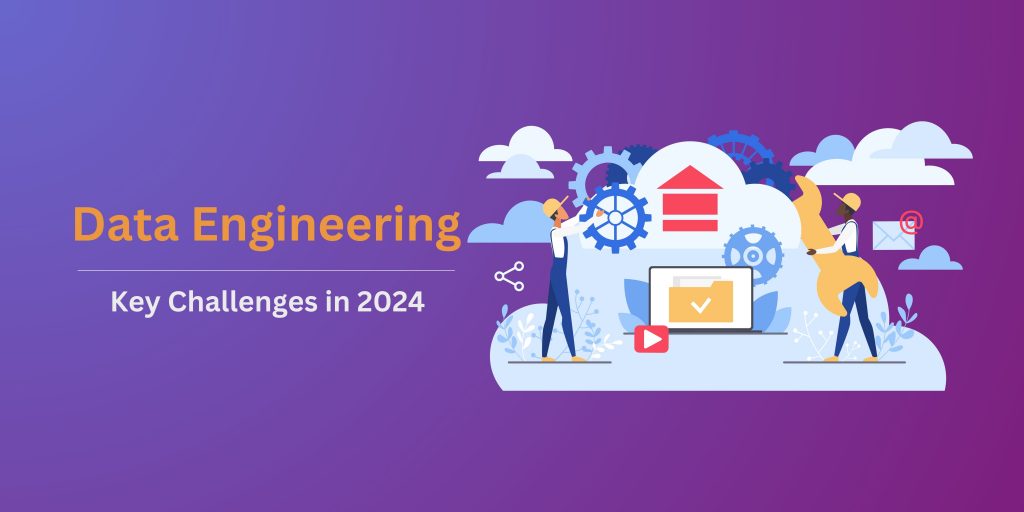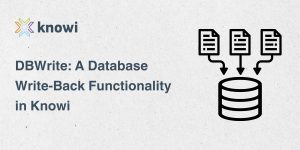The role of data engineers in today’s data-centric world is more critical than ever. As the owner of data infrastructure, they are responsible for managing, storing, and analyzing the massive amounts of data generated daily, turning it into actionable insights for organizational growth. However, the path is not without its hurdles. In this blog post, we discuss the challenges faced in the data engineering domain in 2024, providing a comprehensive understanding and strategies for overcoming these obstacles.
- Data Discovery
The process of data discovery involves identifying the types of data needed, understanding the various systems in place, and figuring out how to bring all this data together to create efficient data pipelines. This step is critical for setting the stage for what comes next – data modeling, solving business problems, and ultimately, unlocking the value hidden within your data.
However, as organizations grow and integrate with numerous suppliers and disparate data sources, the complexity of data discovery increases. Each source comes with its own set of formats, schemas, and standards, making the integration process similar to fitting pieces from different puzzles together. This not only requires a deep technical understanding but also a sharp eye for compliance with various regulations to ensure data is integrated securely and efficiently.
It’s important for data professionals to be precise and specific during this phase to avoid complications later on. The eagerness to start data projects often leads to oversight in this area, which can haunt teams as they approach production.
- Data Silos
Data silos present a big challenge in the landscape of modern data management. Data Silos happen when various departments or systems within an organization store their data in separate, unconnected sources, a situation all too common in today’s enterprises. No single vendor offers a one-size-fits-all solution capable of handling every aspect of a business, leading to a fragmented data ecosystem where data integration is minimal. The consequences of siloed data are multifaceted, impacting organizations negatively. For example they can hamper the analysis of the complete customer journey, thus potentially missing out on sales opportunities due to the marketing and sales departments operating from separate datasets.
Moreover, the redundancy of data maintenance efforts across different teams escalates operational costs, while the inconsistency and inaccessibility of data erode its quality and the trust stakeholders place in it. This distrust in data integrity can significantly impair strategic decision-making and inhibit business growth, highlighting the urgent need for strategies that foster data integration and accessibility across the organizational spectrum.
- Data Quality
Data quality is paramount. Without high-quality data that is complete, accurate, relevant, and consistent, the entire data value chain is compromised. The quality of data directly influences the insights derived from it, making it essential for data engineers to implement rigorous data validation and cleansing processes.
Data quality issues can arise from various sources, including third-party suppliers or manual data entry processes that do not adhere to strict data standards. These issues involve the identification and rectification of corrupt, duplicate, or incomplete data to ensure its accuracy, completeness, and consistency.
Addressing data quality is not about finding a one-size-fits-all solution but rather about integrating it as a core priority within your overall data governance framework. Employing advanced tools and methodologies is essential for maintaining high data quality standards, which, in turn, supports data-driven decision-making. The goal is to transform data lakes into valuable resources rather than allowing them to devolve into data swamps filled with unusable data.
- Data Compliance and Monitoring
With the shift from on-premises to cloud environments, compliance with various data regulations has become more critical and complex. Regulations like GDPR and HIPAA necessitate strict adherence to protect personal and financial data. The challenge extends beyond mere compliance; it encompasses monitoring and auditing data to ensure ongoing adherence to these regulations.
Today, data auditing and monitoring stand out as particularly daunting challenges. As more data moves to the cloud and the volume and variety of data grow, the lack of maturity in auditing and monitoring practices has become apparent. This gap in the data engineering landscape affects not only data security but also data quality and compliance.
Without a formalized process for data auditing and monitoring, organizations risk security breaches, data quality issues, and non-compliance penalties. Addressing this challenge requires a concerted effort to develop more sophisticated frameworks and practices for data governance, auditing, and monitoring. Only then can organizations ensure that their data assets are secure, compliant, and of high quality.
- Data Masking and Anonymization
Protecting data requires comprehensive strategies for data masking and anonymization. These techniques are crucial for hiding sensitive information from unauthorized access while still allowing data to be useful for analysis and processing. Whether it’s through data scrambling, shuffling, or using synthetic data, the goal is to ensure that data privacy and security are maintained without compromising the utility of the data.
- Business Value Generation
The ultimate objective of any data initiative is to generate tangible business value. This involves being clear from the outset about the potential business benefits, both tangible and intangible, that can be derived from data projects. Executives and decision-makers are primarily concerned with how data projects will impact the bottom line and drive business growth.
The challenge lies in ensuring that data initiatives are not just technical exercises but are directly linked to creating business value. This alignment is crucial for securing investment and support for data projects.
- Maintaining Data Pipelines
Data pipelines are critical arteries of an organization’s data infrastructure that allow the flow of data from its source to its destination, maintaining efficiency and connectivity. For data engineers, the creation and maintenance of these pipelines is a core responsibility, demanding meticulous attention to ensure their health and reliability. This involves continuous monitoring of data transfers, swift identification and resolution of bottlenecks, and the implementation of strategic optimizations to avert any potential disruptions.
Adhering to best practices, such as introducing redundancy, guaranteeing fault tolerance, and establishing robust recovery strategies, is essential for sustaining the efficiency and dependability of these systems. Moreover, consistent maintenance efforts focus on refining data flow, reducing downtime, and enhancing scalability, ensuring the pipelines facilitate the movement and transformation of data with utmost efficiency. Through these maintained pipelines, organizations can ensure the flow of high-quality data, allowing data scientists and analysts to derive insightful, actionable information that supports informed decision-making.
- Minimizing Human Error
Human error, an inevitable aspect of data management, poses significant risks to data quality, with even minor inaccuracies potentially undermining the integrity and reliability of data systems. To mitigate this risk, implementing stringent data validation rules and adhering to comprehensive governance policies is paramount. Such measures are needed not only for reducing the occurrence of human-based errors but also for protection, quality, and error-free status of data.
By rigorously applying the appropriate validation techniques and governance standards, organizations can maintain accurate, complete, and consistent data, enabling the extraction of meaningful insights. This, in turn, supports informed decision-making and drives data-driven strategies crucial for organizational growth. Through a committed adherence to these practices, the potential negative impact of human error on data analysis and decision-making processes can be significantly minimized, boosting the overall quality and security of the data.
- Choosing the Right Tools and Technologies
The fast pace at which data engineering tools are changing makes it hard for data engineers to keep up and choose the best tools for their company’s needs. Finding tools that work well with what the company already uses, don’t cost too much, and come with good support can be tricky, especially when people are used to simpler, less effective methods like basic software analytics or spreadsheets. Depending too much on the basic reporting tools that some platforms offer can make work slow and create data silos, making it hard to fully understand the data.
A real-world scenario can be observed in the context of sales performance analysis across multiple product lines. In many organizations, sales data is scattered across different systems, such as CRM platforms, sales automation tools, and financial software, each using disparate data formats and structures. When a company attempts to consolidate this data to analyze overall sales performance, segment profitability, or individual salesperson effectiveness, the complexity of merging these diverse data sources often forces analysts back to manual consolidation using spreadsheets. This not only introduces a high risk of errors but also consumes considerable time and resources, making the process inefficient and potentially inaccurate. Such challenges point towards the need for an integrated data stack, enhanced by powerful business intelligence (BI) tools. With the right BI solution in place, companies can automate the aggregation and analysis of data from different sources, allowing for real-time insights into trends, performance metrics, and areas for improvement.
As we look towards 2024 and beyond, the landscape of data engineering will continue to morph, presenting new challenges alongside novel solutions and strategies for overcoming them. The ability to stay informed, embrace innovation, and cultivate a culture of ongoing improvement empowers data engineers to transform these challenges into catalysts for growth and innovation.
Knowi is an end to end data analytics platform which helps data engineers navigate the engineering challenges. We understand the complexity of data sources and hence allow you to natively integrate data from any source whether it is structured, unstructured, API data or data from cloud services. We allow you to blend data across these different data sources, helping you break data silos and get a unified picture of all your data. Our best in class BI capabilities help you visualize and analyze all this data in one platform, allowing your team to draw actionable insights, all this while keeping your data secure and compliant.






